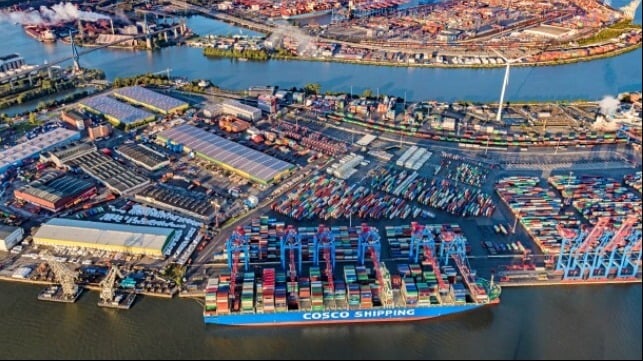Unusually High North Sea Containership Congestion Threatens EU Trade

Global trade continues to show positive signs despite the concerns raised about world economies. However, with unusually long congestion in the North Sea, analysts at Germany’s ifW Kiel Institute for the World Economy fear that the problems rising from significant congestion, high transportation costs, and the resulting supply chain issues could dampen the positive data in the latest report of the Kiel Trade Indicator.
According to their analysis over two percent of global cargo capacity is at a standstill in the North Sea. They are warning that the ships can not be loaded and unloaded due to the unusually long congestion which is likely to have a future effect on trade results.
According to the latest data update of the Kiel Trade Indicator, world trade is up 0.4 percent in June compared with the previous month (price and seasonally adjusted). Europe, however, is showing the weakest results with Germany experiencing a 2.5 percent increase in imports but a slight decline in exports. The EU overall also showed a slight decline in exports and a smaller gain for imports in the latest Kiel indicators. By comparison, both the United States and China, where port congestion has declined, continued to show stronger gains for both imports and exports.
“An end to congestion in container shipping is currently not in sight,” said Vincent Stamer, head of Kiel Trade Indicator. “While long queues have also been observed off Shanghai in the past, for example, this is very unusual for the North Sea. For Germany and the EU, this primarily affects overseas trade, especially with Asia, from where, for example, consumer electronics, furniture, or textiles are delivered.”
As an indicator of the potential impact on trade in Europe, the analysts highlighted a strong decline in volumes of imports on route from Asia to Europe. According to the most recent report for the Kiel Indicator, “there are currently more than 20 percent fewer containerships on the move than would be expected under normal circumstances.” They were looking at traffic on the Red Sea saying it is the most important trade route between Europe and Asia. The last time the gap was this large Stamer said was after the outbreak of the COVID-19 pandemic two years ago.
“A decisive factor could be that the negative effects of the Shanghai lockdown are now becoming apparent due to the 40-day voyage from China to Europe. The containership congestion in the North Sea and an increasing importance of rail transport due to the New Belt and Road Initiative may also be reducing freight volumes in the Red Sea,” says Stamer.
The latest report also highlights that freight volumes in Russia's ports now point quite clearly to an attempt to substitute European trade with Asian volumes. In the Baltic Sea port of St. Petersburg, where goods arrive from Europe, freight volumes have suffered a sustained slump. The other two largest container ports are more involved with Asian trade and are recovering somewhat. “However, imports from Asia have not yet been able to replace trade with Europe,“ says Stamer.
The Kiel Trade Indicator estimates trade flows (imports and exports) of 75 countries and regions worldwide, the EU and world trade as a whole. The next updates will be on July 20 and then at the beginning of August with July trade data.
